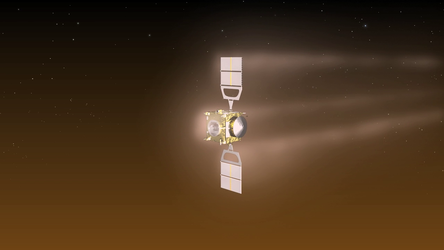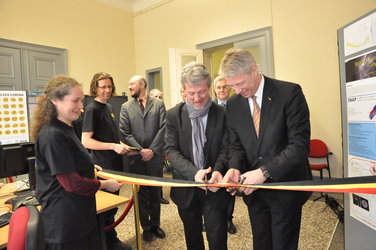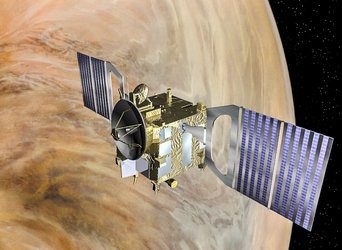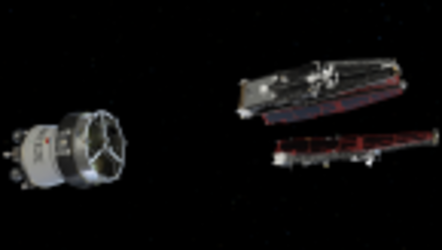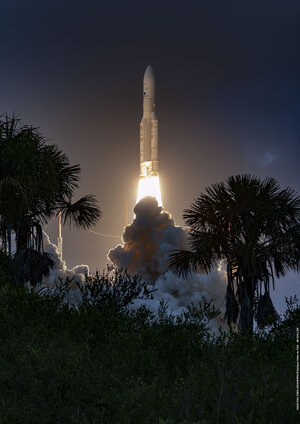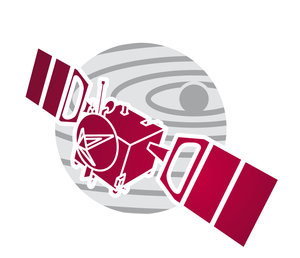Space weather report for an alien world
For the first time, ESA is providing regular space-weather reports for a spacecraft orbiting another planet.
When your spacecraft is surfing deep into the atmosphere of an alien world, you need the latest information on conditions that could affect your trajectory.
If that planet is Venus, that means knowing what’s happening on our Sun in real time, because solar activity can greatly influence conditions like atmospheric density and the radiation environment at Earth’s closest neighbour.
Since May, ground controllers flying Venus Express have been receiving daily reports on solar activity issued by experts at ESA’s Space Weather Coordination Centre (SSCC), at the Space Pole in Belgium.
Surfing the Venus atmosphere
The centre was established by the Agency’s Space Situational Awareness (SSA) programme office, and it began delivering precursor space-weather services for terrestrial clients in last year.
Now that Venus Express has completed its eight-year scientific mission, the reports are especially important as the control team take the satellite through an extraordinary multi-week ‘aerobraking’ campaign.
“Aerobraking means lowering the spacecraft so that for part of each orbit it dips down very low and skims through the very uppermost reaches of the Venusian atmosphere,” notes Adam Williams, Deputy Spacecraft Operations Manager.

“We know that the current state of our Sun can affect Venus’ atmosphere, which could in turn impact the planned orbit of Venus Express as it passes through the atmosphere.”
Adam says that the team do not expect to replan any of the aerobraking orbits based on ‘typical’ solar activity levels.
“The space weather reports will, however, allow us to better understand anomalous behaviour that we may subsequently observe on the spacecraft.
“And in extreme cases, we would be more ready to react to a serious situation. For example, if our startrackers were to be overloaded by radiation.”
Reporting on a complex environment
The weather updates will deliver the best information from a variety of sources – including ESA’s Proba-2 and solar-orbiting ESA and NASA spacecraft – to the control team as rapidly as possible.
“The aim is to report on current conditions and give a short-term forecast of solar activity and radiation conditions, tailored for Venus,” says Juha-Pekka Luntama, responsible for space weather in the SSA programme office.
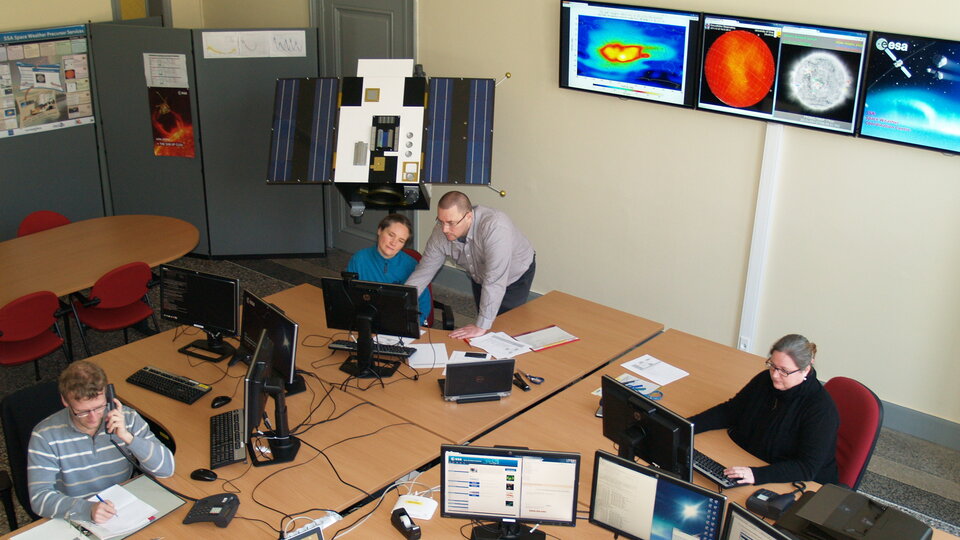
“We’re used to doing this for Earth-orbiting spacecraft, but it’s quite a challenge for Venus due to both its location and the complexity of that planet’s environment.
“Venus is currently 59° ahead of Earth on its orbit around the Sun, and we do not have a spacecraft between the Sun and Venus as we have for Earth.
“So, we need to adapt and extend space weather forecasts we regularly provide towards the direction of Venus.”
Federating European expertise
The first Venus space-weather report was issued on 19 May, and included analysis and forecasts based on data not only from the fleet of solar monitors but also from a new network of Expert Service Centres on the ground operated by ESA member states in the SSA programme.
Juha-Pekka says that ESA’s network will be expanded later this year to include the Heliospheric Weather Expert Service Centre, which will provide dedicated space-weather information for missions travelling to other locations in the Solar System.
In the meantime, the SSCC will continue providing daily reports to the Venus Express team.
“We’ll also issue special bulletins during the day if there is a significant solar event that might affect the Venus space environment.
“If we’ve learned anything about forecasting space weather, it’s that there can always be surprises we were not able to predict.”

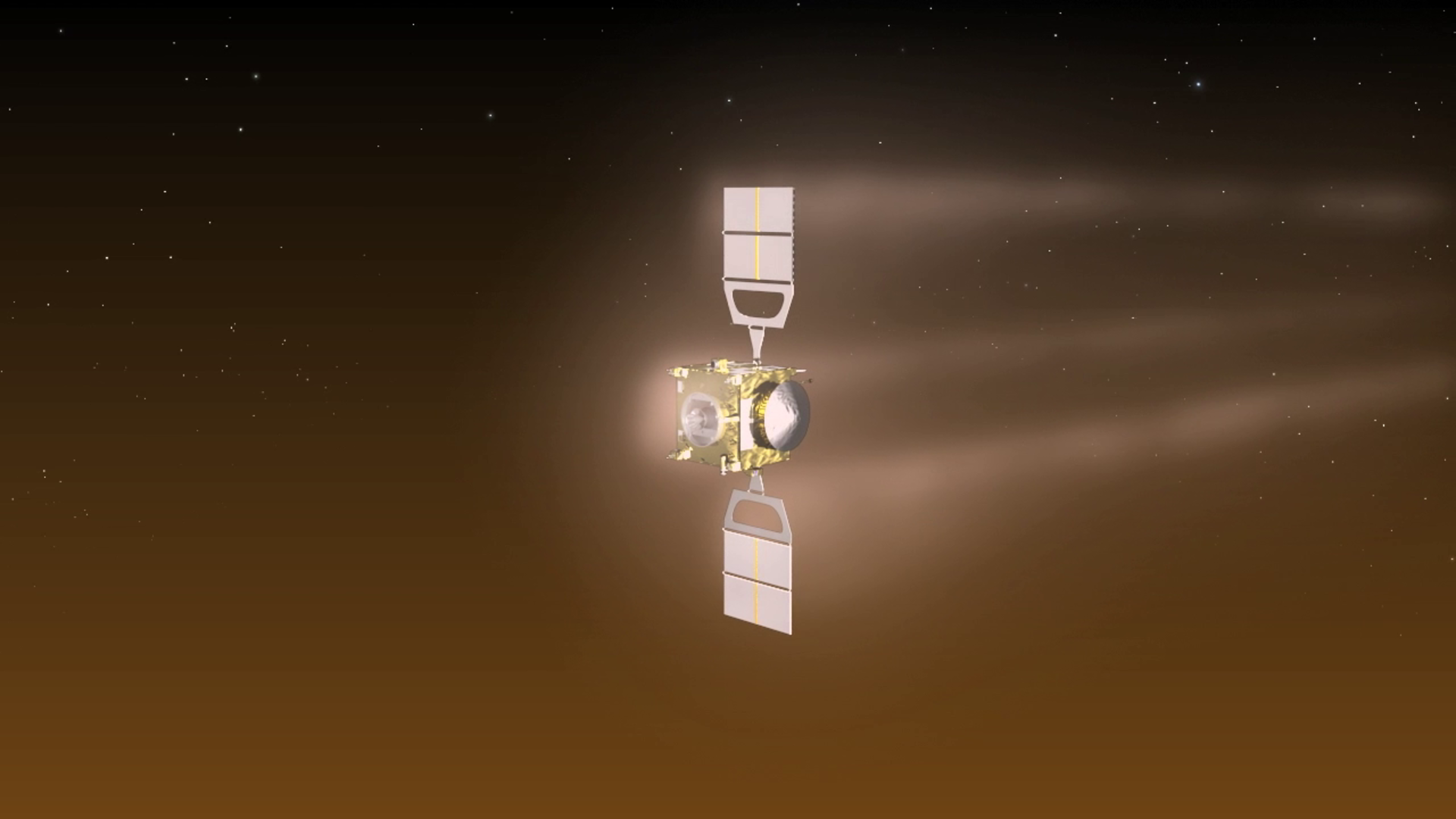
Access the video



